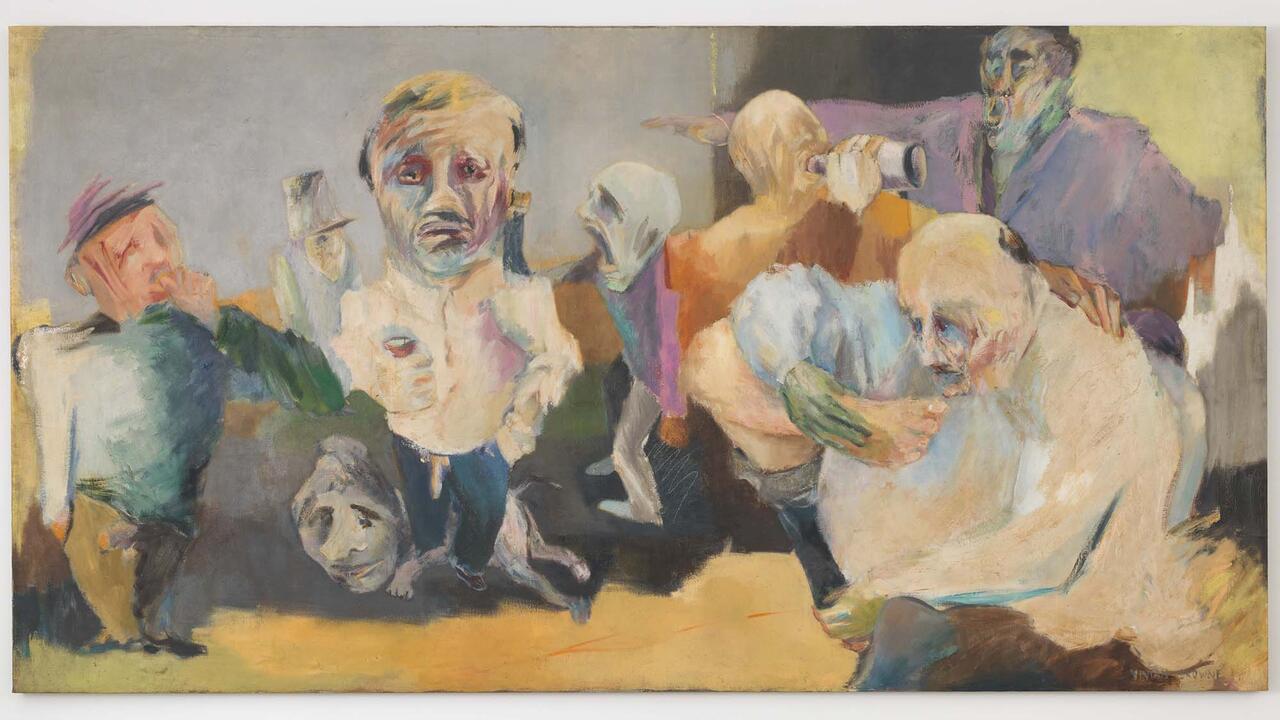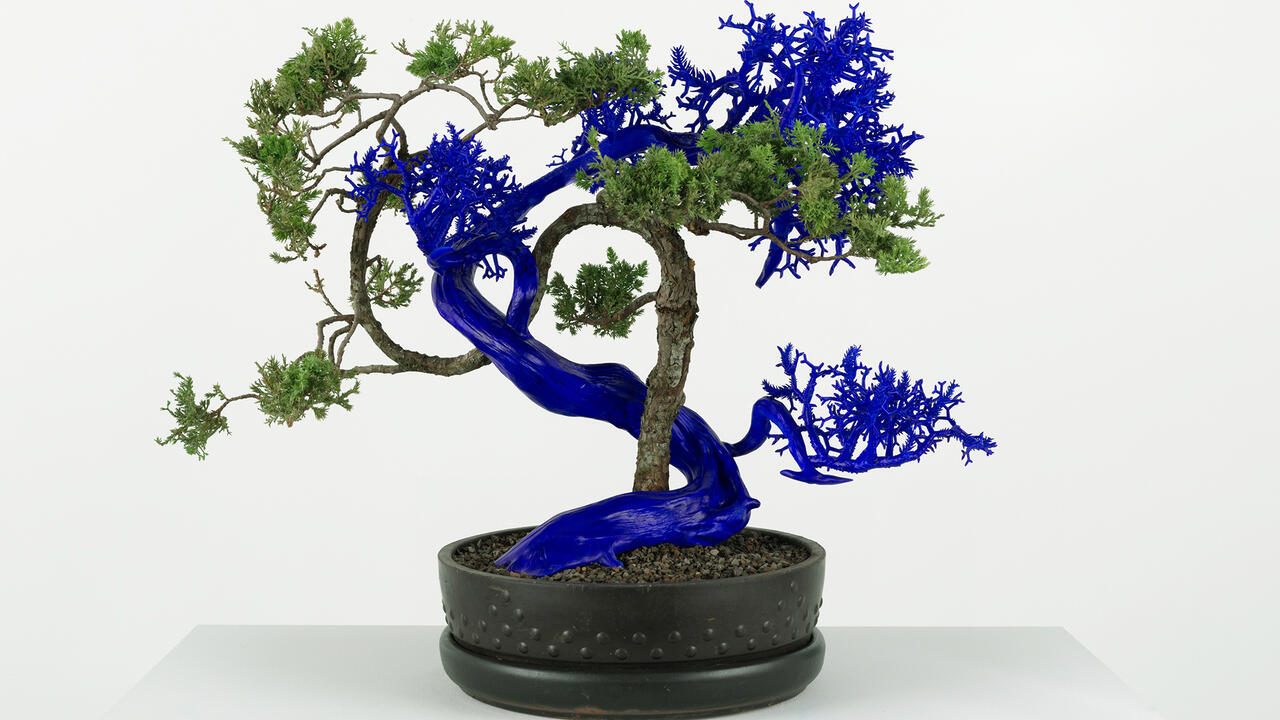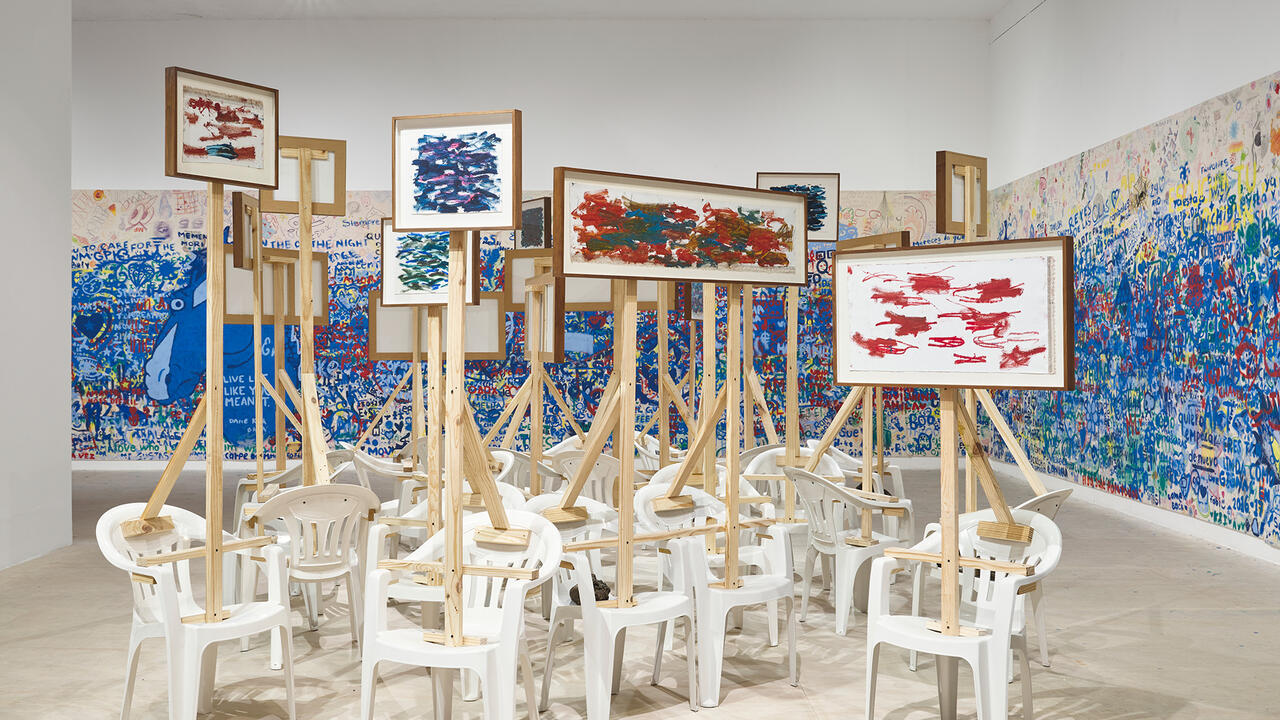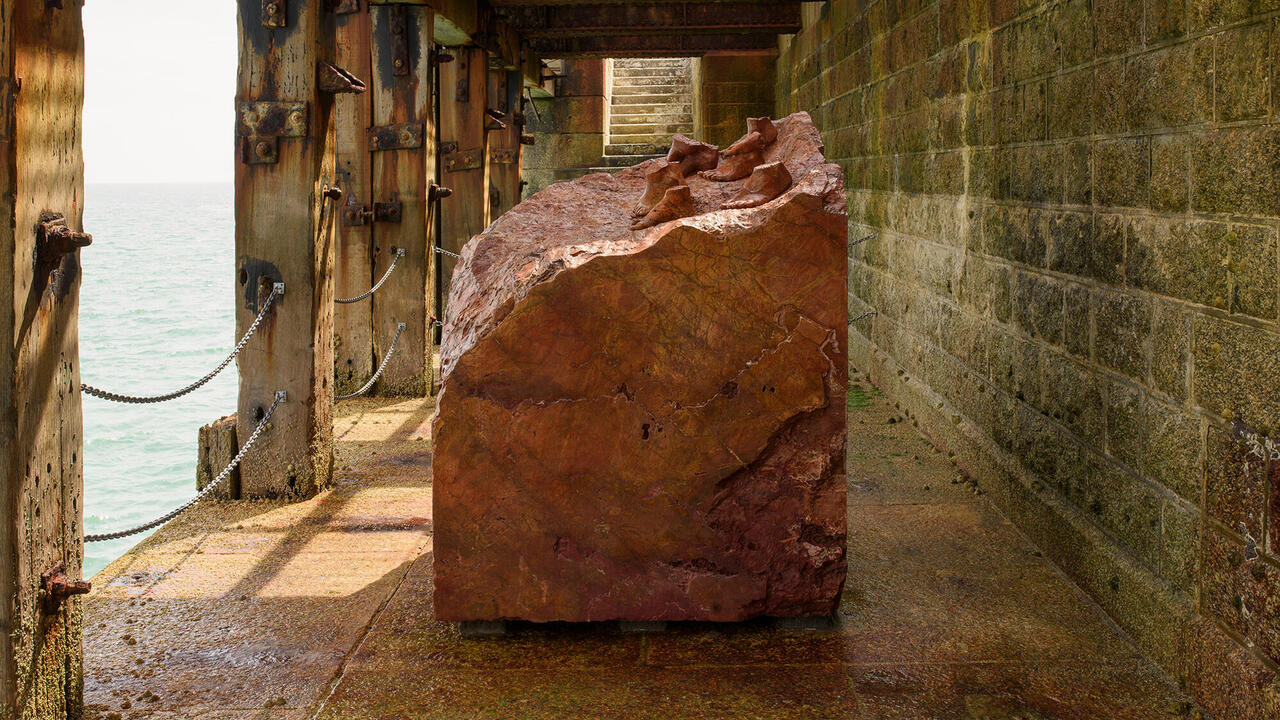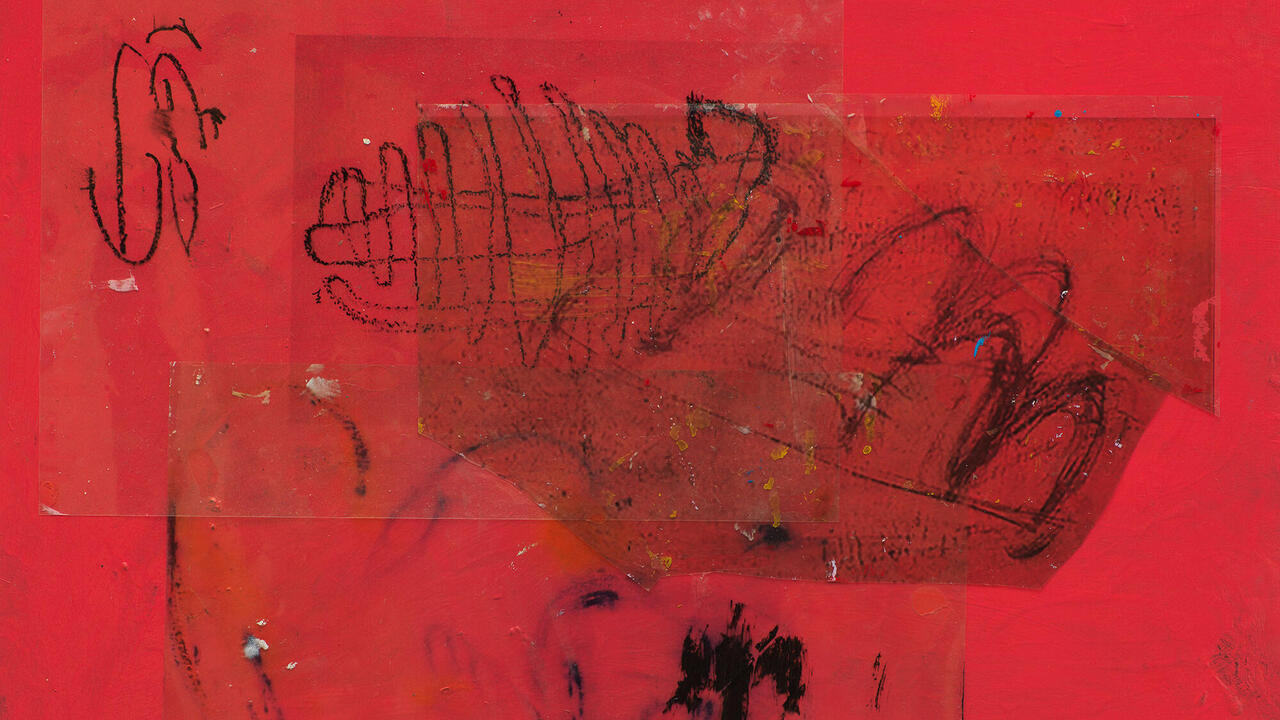Julie Tolentino’s Sculptures Are Living Forms
At Commonwealth and Council, Los Angeles, crystal-encrusted structures highlight organic transformation
At Commonwealth and Council, Los Angeles, crystal-encrusted structures highlight organic transformation

Julie Tolentino’s exhibition at Commonwealth and Council is an exercise in alchemy: it centres the process of becoming as a foundational tenet of the work. Here, everything is in flux, with objects and materials cohering, fracturing, tangling and transforming to create a sculptural dynamism that echoes the organic transmutations of the living world.
The titular installation, The Flood, The Vessel, The Commune—how do we find each other? (2024), occupies a single gallery space. Suspended from the ceiling, five nebulous sculptures encrusted with teeming knots of crystals – grown in situ by the artist – dangle precariously over large vats of murky liquid. Motorized wire tethers sporadically animate these chandelier-like forms (which resemble stalactites or fruiting mushroom bodies), plunging them into the elixirs below. Once daily during open hours, gallery staff rotate the barrels underneath the sculptures to ensure that each object is adequately submerged in each unique solution featuring boron, sodium, oxygen, saltwater, charcoal, pigment and gem essences. Through this choreographed intervention, the solutions’ specific combination of molecular elements furthers the growth of additional crystal formations, catalysing a chain reaction of biotic transformation that asserts the sculptural object as a living form.

In a second installation, entitled crush (2024), the viewer’s body becomes a vessel for absorbing other elemental potions. Two brass spigots emerge from the wall, each of which connects to a plastic cask. Gallery staff invite viewers to pick from a cluster of ceramic cups, fill one with liquid and imbibe the concoction – a medicinal wine – brewed by the artist. To the right of the cups, a rock, a hunk of obsidian, sheaths of animal skin and Pixel Pressure (2024), a screen playing an animated matrix of black and white pixelations, form a haphazard pile on the floor. After consuming the artist’s proprietary drink, the viewer is meant to shatter the earthenware cup against the rock, scattering its broken fragments. The resulting detritus will serve as the material impetus for a future work. This iterative process, which posits the refuse of one thing as the scaffolding for another, informs the underlying logic of Tolentino’s entire exhibition.
In crush, the digested spirits will inevitably exit the viewer’s body as waste, a byproduct of the process of cellular absorption. The crystal-encased sculptures in The Flood, The Vessel, The Commune, on the other hand, directly incorporate another form of corporeal waste: human hair. Much like a bird crafting a nest, Tolentino employed various fibrous materials, such as coconut husk and hair collected from artists and companions, to form the sculptures’ architectural matrices. Once soaked in their mineral solutions, these tangled, hairy masses functioned as fertile nucleation sites for the growth of crystals, enabling an abject form, such as a strand of hair, to alchemize into something reminiscent of a string of pearls. By centring states of cohesion – as well as acts of shedding and consumption – both installations gesture toward the absent body, either directly indexing it or anticipating its presence.

Absent bodies power the exhibition’s sculptural kineticism as a whole: Tolentino’s most poetic feat. Both the rhythmic descent of the sculptures into their mineral baths as well as the abstract pixelations playing on the prone monitor stem from a durational performance entitled On Touch/The Pressure (2016/2023), in which the artist heaves, glides and tenses on the floor alongside nine other participants. Their recorded gesticulations were distilled into an algorithm, which both informs the video and mechanizes the sculptures’ movements; in other words, a repertoire of unseen bodily gestures directly feeds the growth of Tolentino’s crystals. Ultimately, these acts of translation and metamorphosis frame the process of becoming as the exhibition’s quiet, conceptual motor; here, haptic, mercurial states are material destinations in and of themselves.
Julie Tolentino’s ‘The Flood, The Vessel, The Commune—how do we find each other?’ is on view at Commonwealth and Council, Los Angeles, until 29 June
Main image: Julie Tolentino, ‘The Flood, The Vessel, The Commune – how do we find each other?’, 2024, exhibition view. Courtesy: the artist and Commonwealth and Council, Los Angeles, Mexico City; photograph: Paul Salveson











